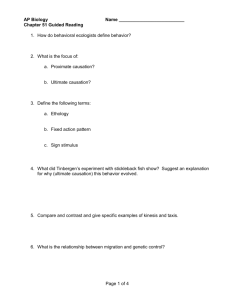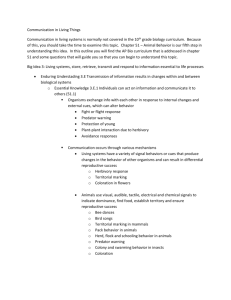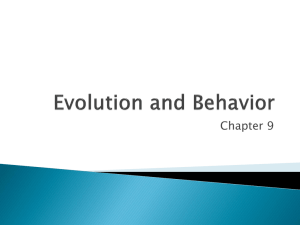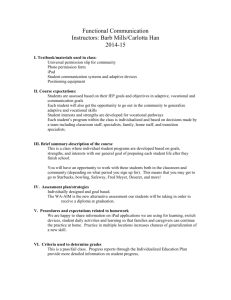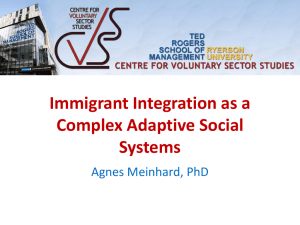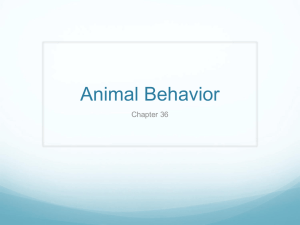AP Biology Study Guide
advertisement
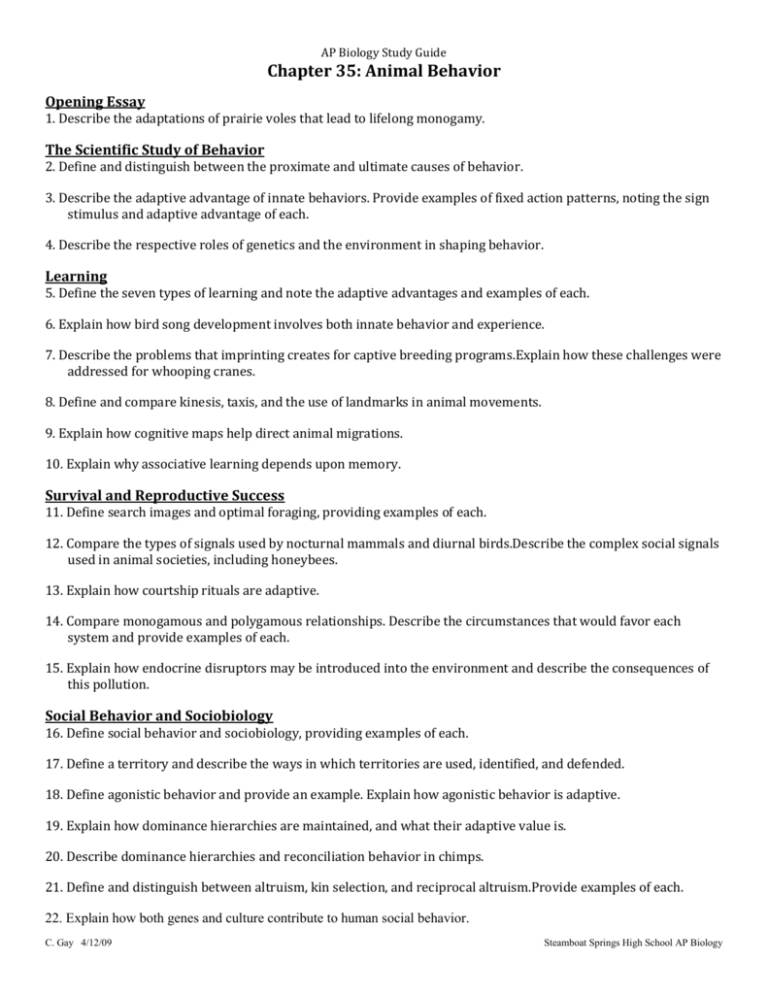
AP Biology Study Guide Chapter 35: Animal Behavior Opening Essay 1. Describe the adaptations of prairie voles that lead to lifelong monogamy. The Scientific Study of Behavior 2. Define and distinguish between the proximate and ultimate causes of behavior. 3. Describe the adaptive advantage of innate behaviors. Provide examples of fixed action patterns, noting the sign stimulus and adaptive advantage of each. 4. Describe the respective roles of genetics and the environment in shaping behavior. Learning 5. Define the seven types of learning and note the adaptive advantages and examples of each. 6. Explain how bird song development involves both innate behavior and experience. 7. Describe the problems that imprinting creates for captive breeding programs.Explain how these challenges were addressed for whooping cranes. 8. Define and compare kinesis, taxis, and the use of landmarks in animal movements. 9. Explain how cognitive maps help direct animal migrations. 10. Explain why associative learning depends upon memory. Survival and Reproductive Success 11. Define search images and optimal foraging, providing examples of each. 12. Compare the types of signals used by nocturnal mammals and diurnal birds.Describe the complex social signals used in animal societies, including honeybees. 13. Explain how courtship rituals are adaptive. 14. Compare monogamous and polygamous relationships. Describe the circumstances that would favor each system and provide examples of each. 15. Explain how endocrine disruptors may be introduced into the environment and describe the consequences of this pollution. Social Behavior and Sociobiology 16. Define social behavior and sociobiology, providing examples of each. 17. Define a territory and describe the ways in which territories are used, identified, and defended. 18. Define agonistic behavior and provide an example. Explain how agonistic behavior is adaptive. 19. Explain how dominance hierarchies are maintained, and what their adaptive value is. 20. Describe dominance hierarchies and reconciliation behavior in chimps. 21. Define and distinguish between altruism, kin selection, and reciprocal altruism.Provide examples of each. 22. Explain how both genes and culture contribute to human social behavior. C. Gay 4/12/09 Steamboat Springs High School AP Biology Key Terms agonistic behavior promiscuous altruism proximate cause associative learning reciprocal altruism behavior search image behavioral ecology sensitive period cognition signal cognitive map social behavior communication social learning dominance hierarchy sociobiology fixed action pattern (FAP) spatial learning foraging stimulus habituation taxis (plural, taxes) imprinting territory inclusive fitness trial-and-error learning innate behavior ultimate cause kin selection kinesis learning migration monogamous optimal foraging theory polygamous problem solving C. Gay 4/12/09 Steamboat Springs High School AP Biology
